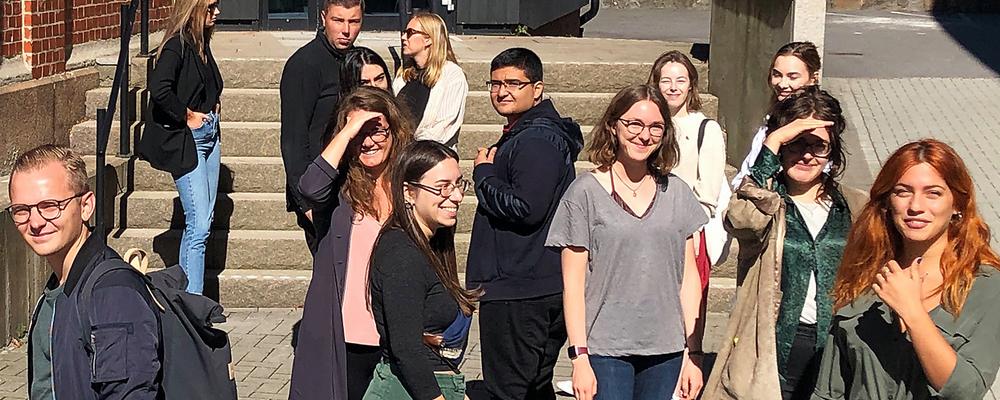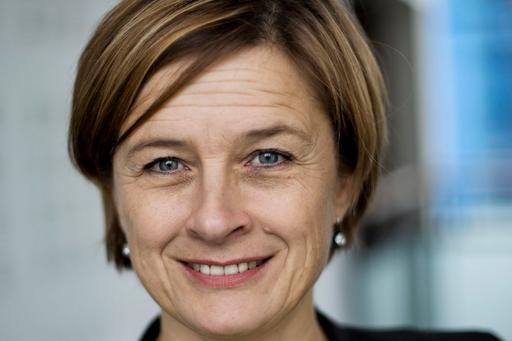
- Home
- News and events
- Find news
- More students than ever choosing investigative journalism at JMG
More students than ever choosing investigative journalism at JMG
In a time of growing threats against journalists, a record number of students have chosen to expand their knowledge of investigative journalism.
The international Master’s Programme MIJ at the Department of Journalism, Media and Communication (JMG) is more popular than ever.
In the middle of the coronavirus pandemic, 37 students from all over the world have come together to learn more about investigative journalism. Despite travel restrictions, 28 have managed to make their way to Sweden to receive their education in person.
“We normally have 20-25 students in a class, so we were surprised to see so many heading here to Gothenburg despite the pandemic,” says programme coordinator Ulla Sätereie at JMG.

Challenging hybrid education
To ensure that everyone can take part, both on-site and remotely, the teachers have switched to hybrid education, which means that the students participating remotely can do so on the same terms as those who are present in the room.
They have adapted lectures and exercises to keep the group together despite the fact that not everyone can meet physically. To this end they work with more than just Zoom, employing a range of different digital tools to communicate and collaborate.
“In this respect coronavirus has had positive effects, making us more digitalised,” says Ulla Sätereie.
The technique needs to work, with fully charged webcams, microphones and computers, so the students out in the world are able to follow proceedings in real time – losing the network connection in the middle of a lecture is the nightmare scenario.
“Of course it poses major challenges for all of us, teachers and students alike,” says Ulla Sätereie. “But it also generates a creative environment, where everyone helps each other to solve the challenges as they happen.”
Cross-border collaboration
The 37 students come from 21 different countries, with seven Swedes, 23 from other EU countries and seven from countries outside the EU: Armenia, Belarus, Ghana, Cameroon, Lebanon and Russia.
“Scrutinising events in today’s globalised world increasingly requires cross-border journalism and an ability for journalists from different countries to work together,” explains Brigitte Alfter, who joined MIJ as a new teacher last autumn.
She is a German-Danish journalist with extensive experience in developing strategies and methods for cross-border journalism in Europe.
Perhaps the best-known example of cross-border journalism is the revelations in the Panama Papers back in 2016. Several hundred journalists and media organisations all over the globe joined forces to review the millions of documents relating to money laundering and implicating many of the world’s biggest banks. Just the other week SVT’s Uppdrag Granskning programme on Swedish TV broadcast a new and much talked about report on SEB’s suspected involvement.
Intercultural communication
“Collaborating on big international stories demands a great deal of understanding and mutual respect from the journalists. They come from countries with different forms of government and legislation and shifting levels of democracy and press freedom, not to mention the fact that communication cultures and journalistic forms may also vary,” says Brigitte Alfter.
So that everyone could get to know each other and establish a good team spirit, the teachers therefore began the term with several lectures and exercises on intercultural communication.
“We spent the whole of the first week talking about intercultural and personal communication in teams, cross-border collaboration, teamwork and project management from a distance. They are going to find this useful when they have to collaborate across borders. And it also makes them better prepared for hybrid and distance education. We’re in no doubt that this has laid a good foundation for their continuing studies,” comments Brigitte Alfter.
Students set to go digging for a story
Right from the start, the students learn how to dig out stories and report on them. They conclude by conducting a major investigation that is often published in the media.
Here are a few examples of MIJ students’ previous investigations – you can find the full list here (https://www.gu.se/en/study-gothenburg/mijinvestigations):
- The water eats the land. An examination of the UN’s Environment Programme in Tanzania. By Michaela Kozminova and Elias Arvidsson, The Ecologist, 2019.
- Israeli government accused of abandoning soldiers with PTSD. An investigation into the lack of mental health support for Israeli soldiers. By Amanda Forslund and Charlotta Lindblom, The Guardian, 2019.
- Violence, violations and deaths at accommodation for people with disabilities. An examination of violence, abuse and fatalities at sheltered housing for disable people. Based on an investigation by Jessica Lindbom Jämting, Uppdrag Granskning, SVT, 2018.
- The new surrogate mothers. An investigation into the phenomenon of surrogacy. Research by Felicia Bredenberg, Lucas Dahlström and Liliia Makashova for Uppdrag Granskning, SVT, 2018.
Find out more
- about the international Master’s Programme in Investigative Journalism (MIJ) on JMG’s website
- about Brigitte Alfter and cross-border journalism on her website (www.alfter.dk)
- about intercultural communication in the book Meanings and Messages by Inger Askehave, Birgitte Norlyk, Malene Gram and Malene Djursaa (Hans Reitzels Forlag, Denmark, 2007)
Text: Cajsa Malmström
Photo: Helena Löfving